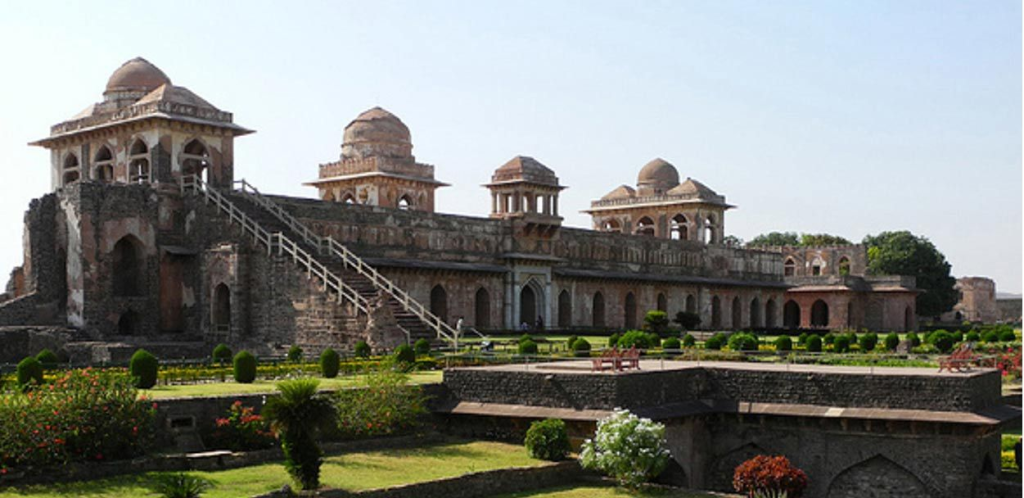Introduction:
Madhya Pradesh, known as the “heart of India,” is home to numerous historical and architectural wonders. Among them, the Group of Monuments in Mandu, located in the Dhar district, stands out as a testament to the rich cultural heritage of the region. Nestled amidst scenic landscapes, this UNESCO World Heritage Site showcases a magnificent fusion of Hindu, Islamic, and Afghan architectural styles. Let’s embark on a virtual journey to Mandu and discover the allure of these captivating monuments.

The Historical Significance of Mandu:
Mandu, also known as Mandavgarh, was once the capital of the Malwa region and flourished during the medieval period. Its strategic location atop a plateau provided natural defenses and attracted the attention of various dynasties, including the Parmar rulers, the Khalji dynasty, and the Mughals. This historical significance is reflected in the numerous forts, palaces, and tombs that adorn the region.

Jahaz Mahal – The Ship Palace:
One of the most iconic structures in Mandu is the Jahaz Mahal, or the Ship Palace. Built during the reign of Sultan Ghiyas-ud-din Khilji, it is an architectural marvel that resembles a ship floating in a vast expanse of water. With its elegant arches, balconies, and intricately carved stone latticework, the palace leaves visitors awe inspired.
Hoshang Shah’s Tomb – An Afghan Architectural Gem:
Hoshang Shah’s Tomb is another remarkable monument that holds immense historical significance. Constructed in the early 15th century, it is the first marble tomb in India and is considered a precursor to the renowned Taj Mahal. The simplicity of its design, combined with the intricate details and delicate carvings, make it a masterpiece of Afghan architecture.

The Royal Enclave:
The Royal Enclave in Mandu is a collection of palaces, pavilions, and gardens that once housed the kings and queens of the region. The Rani Roopmati Pavilion, perched on a hill overlooking the Narmada River, is a must-visit spot. Legend has it that the pavilion was built for the love of the queen, Rani Roopmati. The Baz Bahadur Palace, adjacent to the pavilion, showcases a blend of Mughal and Rajput architectural styles and offers panoramic views of the surrounding landscape.
The Jami Masjid:
Mandu’s architectural splendor extends to its religious structures as well. The Jami Masjid, built during the reign of Hoshang Shah, is an imposing mosque that stands as a testament to the region’s Islamic influence. The mosque’s large courtyard, intricately carved pillars, and beautiful arches showcase the grandeur of Islamic architecture.
Rewa Kund and other Attractions:
Apart from the magnificent monuments, Mandu offers several other attractions. Rewa Kund, a reservoir built during the reign of Baz Bahadur, is surrounded by lush greenery and provides a tranquil environment. The romantic tale of Baz Bahadur and Rani Roopmati is still whispered among the hills and valleys of Mandu, adding to the allure of the place. Additionally, the Mandu Fort, Jain temples, and the eco-friendly Bagh Caves are worth exploring.
Conclusion:
A visit to the Group of Monuments in Mandu is a journey back in time, where history, art, and culture converge to create a mesmerizing experience. The intricate architecture, the stories woven into each stone, and the scenic landscapes make Mandu an enchanting destination for history buffs and architecture enthusiasts. As you immerse yourself in the rich heritage of this UNESCO World Heritage Site, you’ll discover why Mandu holds a special place in the hearts of those who visit. Plan your trip to Mandu, and let its timeless beauty leave an indelible mark on your soul.